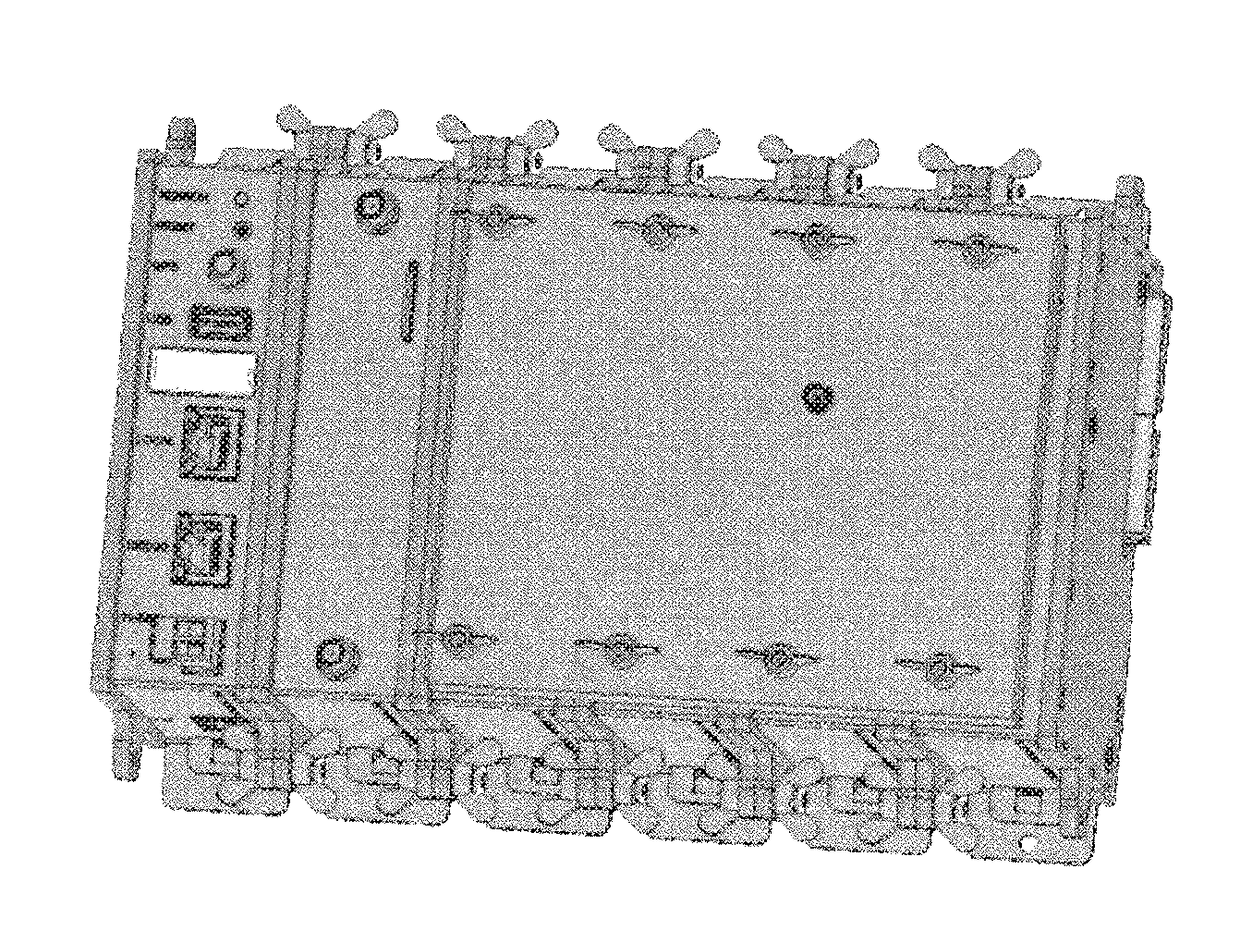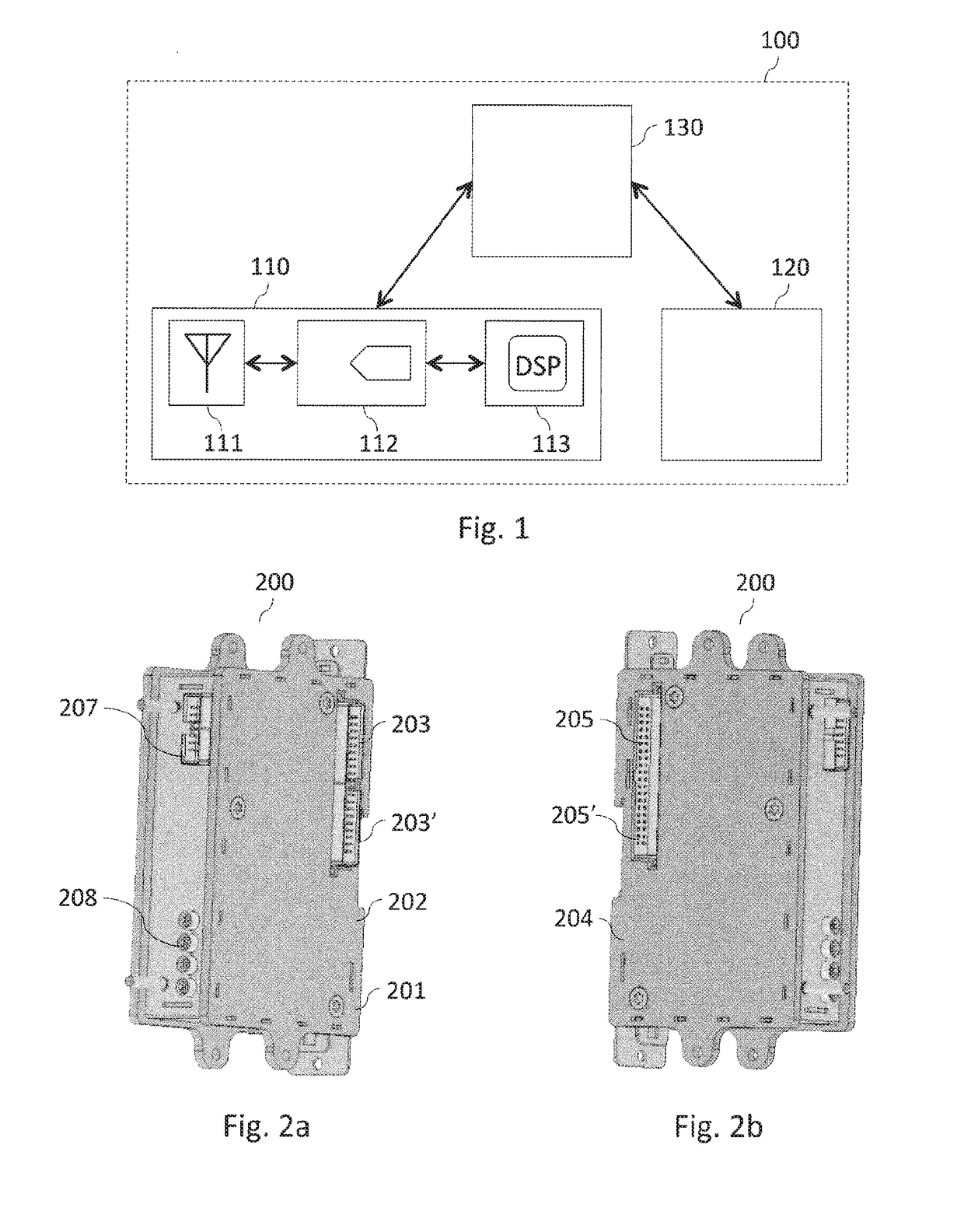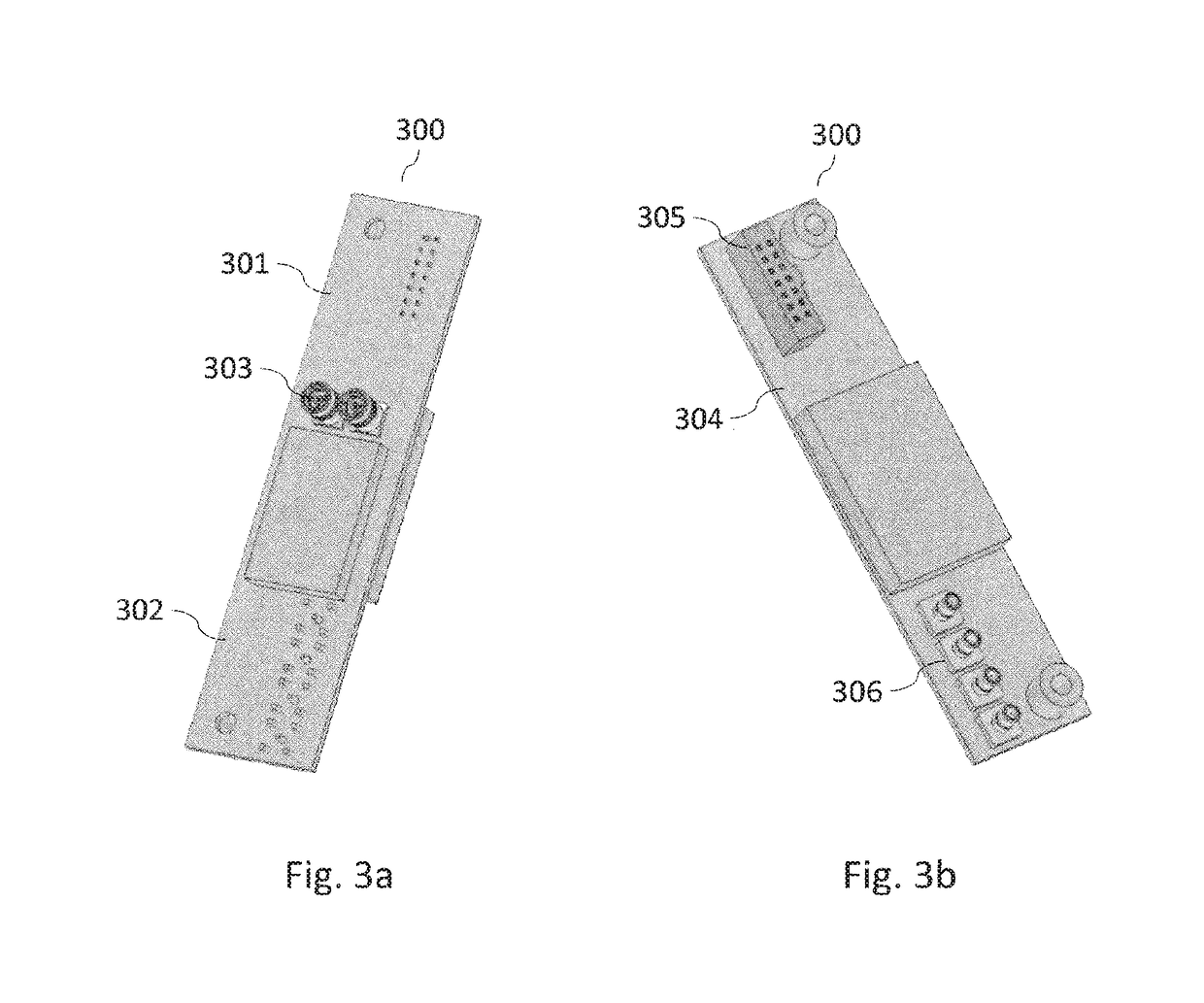Modular base station architecture for wireless sensor network
a wireless sensor network and module technology, applied in the field of internet of things, can solve the problems of limited scalability of existing gateways for the deployment of wireless sensor networks, limited connectivity of gateways, and no longer suitable for wireless sensor networks
- Summary
- Abstract
- Description
- Claims
- Application Information
AI Technical Summary
Benefits of technology
Problems solved by technology
Method used
Image
Examples
Embodiment Construction
[0044]The proposed technique relates to a novel base station architecture for the deployment of sensor networks, or other communicating objects, in a wireless arrangement. Throughout the document, a base station of this type is also described as a “gateway”, and the term “wireless sensor network” is employed indiscriminately to signify a network of wireless sensors, or a network of—potentially more complex—wireless communication objects. The proposed architecture is based upon the separation of the key conventional functionalities of a gateway into different physical blocks, each of which has its own dedicated frame, within which different communication interfaces are arranged, such that these different physical blocks are interconnectable. This design not only permits the simple and rapid construction of “customized” gateways, thus permitting the fulfillment of many different types of requirements, but also endows these gateways with a high level of modularity and scalability. The ...
PUM
 Login to View More
Login to View More Abstract
Description
Claims
Application Information
 Login to View More
Login to View More - R&D
- Intellectual Property
- Life Sciences
- Materials
- Tech Scout
- Unparalleled Data Quality
- Higher Quality Content
- 60% Fewer Hallucinations
Browse by: Latest US Patents, China's latest patents, Technical Efficacy Thesaurus, Application Domain, Technology Topic, Popular Technical Reports.
© 2025 PatSnap. All rights reserved.Legal|Privacy policy|Modern Slavery Act Transparency Statement|Sitemap|About US| Contact US: help@patsnap.com



